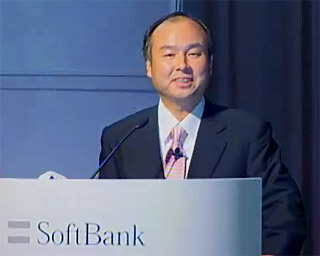A Tale of Two Mobile Technologies
The recent round of international press devoted to ‘the next big thing for mobile’ has an interesting, and recurring, theme. It started with a fair amount of mainstream media attention devoted to the statements made at CTIA during Visa’s keynote address regarding the evolution of mobile payments. Around the same time we notice that Capt. Kirk went boldly where no ex-pat Canadian would dare go (Toronto in March) to attend this presser with Ted Rogers promoting a new fangled mobile web-cam handset, which the company breathlessly hailed as “a landmark in wireless communications”.
We also noticed this special op-ed from Card Technology about how Sony is potentially challenged to get their m-commerce product outside of Japan. The article did some great work, however there’s plenty of room for a counter-point discussion. One thing rings true, both of these technologies were deployed here in Japan years ago and like the camera-phone will begin making their way into markets overseas in due course.


 The long summer silence from SoftBank on the rebranding of Vodafone K.K. to SoftBank Mobile is over with no less than
The long summer silence from SoftBank on the rebranding of Vodafone K.K. to SoftBank Mobile is over with no less than  DCMX: Is it a phone that can buy stuff or a credit card that can make calls? NTT DoCoMo is hoping that millions of spend-free consumers won’t know or care about the distinction and will simply use the new ‘DCMX’ credit-card phone for, well, pretty much everything. For small, daily purchases — like a six-pack and a take-out bento lunch — use the phone’s e-money FeliCa chip with no authentication required; for larger buys (a cool Louis Vuitton bag from the Omotesando boutique), use the DCMX credit-card function with a swipe and a PIN code; later, the phone will eyeball you for biometric authorization. “We wish to combine telecoms with financial services,” says DoCoMo’s Mr i-mode, Takeshi Natsuno, in today’s video program — and if there’s a cellco anywhere in the world that can afford the value-chain coordination costs to deploy a workable phone/credit card combo, it has to be NTT DoCoMo.DCMX is a logical progression from the carrier’s popular ‘o-saifu keitai’ IC-chip handsets that can store value onboard for small, daily purchases, and the launch announcement confirms DoCoMo’s strategic course aiming squarely at making the network-connected phone the payment method of choice for millions of Japanese. Maybe one day something this useful will be offered by carriers elsewhere?
DCMX: Is it a phone that can buy stuff or a credit card that can make calls? NTT DoCoMo is hoping that millions of spend-free consumers won’t know or care about the distinction and will simply use the new ‘DCMX’ credit-card phone for, well, pretty much everything. For small, daily purchases — like a six-pack and a take-out bento lunch — use the phone’s e-money FeliCa chip with no authentication required; for larger buys (a cool Louis Vuitton bag from the Omotesando boutique), use the DCMX credit-card function with a swipe and a PIN code; later, the phone will eyeball you for biometric authorization. “We wish to combine telecoms with financial services,” says DoCoMo’s Mr i-mode, Takeshi Natsuno, in today’s video program — and if there’s a cellco anywhere in the world that can afford the value-chain coordination costs to deploy a workable phone/credit card combo, it has to be NTT DoCoMo.DCMX is a logical progression from the carrier’s popular ‘o-saifu keitai’ IC-chip handsets that can store value onboard for small, daily purchases, and the launch announcement confirms DoCoMo’s strategic course aiming squarely at making the network-connected phone the payment method of choice for millions of Japanese. Maybe one day something this useful will be offered by carriers elsewhere?